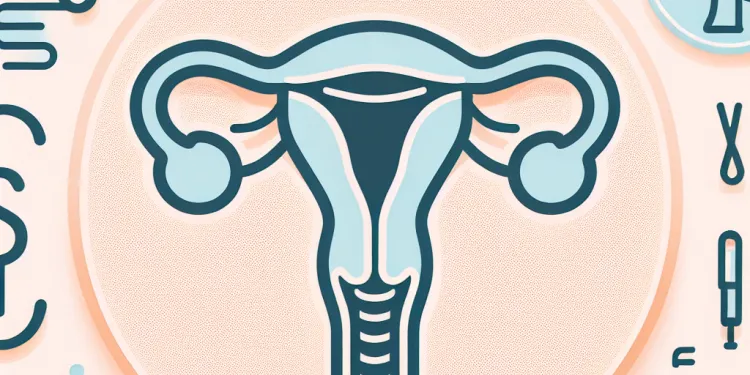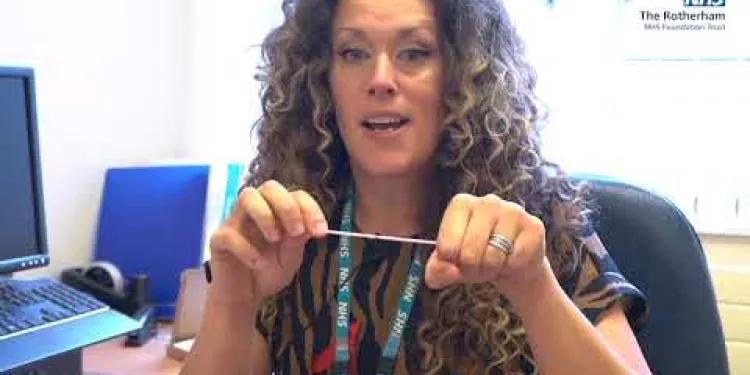
Find Help
More Items From Ergsy search
-

What is the womb lining test?
Relevance: 100%
-

What is the Womb Lining test?
Relevance: 98%
-

Is a womb lining test painful?
Relevance: 98%
-

Is the womb lining test covered by the NHS?
Relevance: 97%
-

Why is a womb lining test performed?
Relevance: 97%
-

Is the womb lining test covered by the NHS?
Relevance: 96%
-

Is the womb lining test painful?
Relevance: 95%
-

How is a womb lining test conducted?
Relevance: 94%
-

Can a womb lining test detect cancer?
Relevance: 93%
-

Are there risks associated with a womb lining test?
Relevance: 92%
-

Can a womb lining test detect cancer?
Relevance: 92%
-

How is the womb lining test performed?
Relevance: 91%
-

Are there any risks associated with the womb lining test?
Relevance: 91%
-

Why might someone need a womb lining test?
Relevance: 90%
-

Can I drive after the womb lining test?
Relevance: 87%
-

What happens after a womb lining test?
Relevance: 87%
-

How should I prepare for a womb lining test?
Relevance: 84%
-

Is there any follow-up required after a womb lining test?
Relevance: 83%
-

How long does it take to get results from a womb lining test?
Relevance: 81%
-

Does the womb lining test require any special preparation?
Relevance: 81%
-

How long does it take to get results from a womb lining test?
Relevance: 80%
-

What does an evaporation line mean on a pregnancy test?
Relevance: 51%
-

What is a lot line adjustment?
Relevance: 35%
-

Are digital pregnancy tests more accurate than non-digital tests?
Relevance: 34%
-

How does a pregnancy test work?
Relevance: 33%
-

What is a pregnancy test?
Relevance: 32%
-

What should I do if I get unclear results on a pregnancy test?
Relevance: 30%
-

When should I take a pregnancy test?
Relevance: 29%
-

What can cause a false positive pregnancy test?
Relevance: 28%
-

How long should I wait to read the results of a pregnancy test?
Relevance: 27%
-

Can a pregnancy test expire?
Relevance: 27%
-

What are the different types of pregnancy tests?
Relevance: 26%
-

What if my pregnancy test is positive?
Relevance: 26%
-

Can a pregnancy test detect a miscarriage?
Relevance: 25%
-

Rectal swab test for Gonorrhoea and Chlamydia
Relevance: 25%
-

Do all pregnancy tests detect the same levels of hCG?
Relevance: 24%
-

Can drinking a lot of water affect pregnancy test results?
Relevance: 24%
-

Is there an autism test?
Relevance: 24%
-

What is a stool DNA test?
Relevance: 24%
-

How soon can a pregnancy test detect pregnancy?
Relevance: 24%
Understanding the Womb Lining Test
The womb lining test, also known as an endometrial biopsy, is a medical procedure used to assess the lining of the uterus, or endometrium. This test can be crucial in diagnosing various conditions affecting women's reproductive health.Purpose of the Womb Lining Test
The primary purpose of the womb lining test is to examine the cells of the endometrium. This examination helps diagnose several issues, such as fertility problems and abnormal uterine bleeding. Additionally, the test can be used to monitor the effects of hormonal treatments or to check for pre-cancerous or cancerous cells.How the Test is Performed
An endometrial biopsy is typically conducted in a healthcare provider's office. During the procedure, a thin, flexible tube is inserted through the cervix into the uterus to obtain a small sample of the endometrial tissue. The process may cause discomfort similar to menstrual cramps, but it is usually quick and does not require general anesthesia.Who Needs a Womb Lining Test?
The test is often recommended for women experiencing abnormal menstrual bleeding, postmenopausal bleeding, or as part of an investigation into infertility. It may also be used for women on hormone replacement therapy to ensure the treatment isn't causing detrimental changes to the uterine lining.Interpreting Results
Once the tissue sample is collected, it is sent to a laboratory where it is examined under a microscope. The results provide crucial information about the condition of the uterine lining and can indicate whether there are any abnormal cells present.Risks and Considerations
An endometrial biopsy is generally safe; however, it may involve some risks like cramping, bleeding, or infection. It's important for women to discuss their medical history and any potential concerns with their healthcare provider before undergoing the procedure. In summary, the womb lining test is a valuable diagnostic tool in reproductive health, offering insights into various uterine conditions and guiding effective treatment plans.Understanding the Womb Lining Test
The womb lining test is also called an endometrial biopsy. It is a test to look at the lining inside the womb. The womb is also known as the uterus. This test can help find out about health issues for women.Purpose of the Womb Lining Test
The main reason for the womb lining test is to look at the cells in the womb lining. This helps find out why there might be problems like having a baby or bleeding that isn't normal. The test also shows if hormones are working well or if there are any bad cells, like cancer.How the Test is Performed
The test usually happens at a doctor's office. A thin tube goes through the cervix into the womb to take a little piece of the lining. This might hurt a bit, like period cramps, but it is quick and you stay awake.Who Needs a Womb Lining Test?
The test is good for women with bleeding that is not normal, bleeding after menopause, or having trouble getting pregnant. Women using hormone medicine might also need it to make sure the medicine isn’t affecting the womb lining badly.Interpreting Results
After taking the sample, it goes to a lab. Experts look at it with a microscope. The results show if the womb lining is healthy or if there are any bad cells.Risks and Considerations
The womb lining test is generally safe, but there might be some risks like cramps, bleeding, or infection. It is important to talk to your doctor about any worries before doing the test. In short, the womb lining test is important for checking women’s health. It helps doctors find out about womb issues and decide the best treatment. For help with reading, you can use tools like text-to-speech. These tools can read the text out loud for you.Frequently Asked Questions
What is the womb lining test?
The womb lining test, or endometrial biopsy, is a procedure to take a small sample of the tissue from the lining of the uterus (endometrium) for examination.
Why is a womb lining test performed?
A womb lining test is often performed to investigate abnormal uterine bleeding, assess fertility, or diagnose potential endometrial abnormalities, including cancer.
How is the womb lining test conducted?
During the test, a thin, flexible tube is inserted through the cervix to collect a small sample of endometrial tissue, which is then examined under a microscope.
Is the womb lining test painful?
The procedure may cause some discomfort or cramping, but it typically doesn't last long. Pain relief options can be discussed with your healthcare provider.
How should I prepare for a womb lining test?
Your doctor will provide specific instructions, but generally, you might be asked to avoid using tampons, douches, or vaginal medications before the test.
What are the possible side effects of a womb lining test?
You may experience some light bleeding or cramping following the procedure, but serious complications are rare. Contact your doctor if you notice heavy bleeding or signs of infection.
How long does it take to get results from a womb lining test?
Results are typically available within a week. Your doctor will discuss the findings with you and outline any necessary follow-up steps.
Can the womb lining test detect cancer?
Yes, the test can help detect abnormal cells that may indicate endometrial cancer or other conditions affecting the lining of the womb.
Is the womb lining test covered by the NHS?
Yes, the womb lining test is generally covered by the NHS when medically indicated.
Who might need a womb lining test?
Women experiencing abnormal bleeding, those with fertility issues, or women undergoing evaluation for menopausal symptoms might need this test.
Can I have a womb lining test if I am pregnant?
The womb lining test is not typically performed during pregnancy. Inform your doctor if you are or might be pregnant before the test.
How long does the womb lining test take?
The actual procedure usually takes about 10 to 15 minutes, but you may need to be in the clinic longer for preparation and recovery.
Are there any alternatives to the womb lining test?
Alternatives might include ultrasound imaging or hysteroscopy, depending on what your doctor is trying to diagnose.
What should I do after a womb lining test?
You may resume normal activities, but avoid strenuous exercise and sexual intercourse for a short period as advised by your doctor.
When should I contact my doctor after a womb lining test?
Contact your doctor if you experience heavy bleeding, severe pain, fever, or any unusual discharge after the procedure.
What is the womb lining test?
The womb lining test checks the inside of the womb.
The doctor uses this test to see if everything is okay.
You might hear other names for it, like endometrial biopsy.
If you need this test, it is a good idea to talk with your doctor.
They can tell you what will happen and why it is needed.
To help understand better, you can:
- Ask someone you trust to come with you.
- Use pictures or drawings to explain.
- Ask lots of questions if you're unsure.
The womb lining test, or endometrial biopsy, is a way to check the inside of the womb. A doctor takes a tiny piece of tissue from the womb's lining. They look at it to make sure everything is okay.
Why do doctors check the womb lining?
Doctors check the womb lining to make sure everything is okay. The womb is where a baby grows. The lining is important for a healthy womb. Doctors can check for problems and help if needed.
If you find this hard to understand, you can ask someone to read it with you. You can also use tools like a text reader to help you listen to the words.
A womb lining test is a check-up doctors do to find out why someone is bleeding when they shouldn’t be. It also helps doctors see if someone can have babies or if there is something wrong inside, like cancer.
How do doctors check the lining inside the womb?
Doctors use a special test to look at the lining inside the womb. This test is called a biopsy.
- First, the doctor will talk to you and explain what will happen.
- They will ask you to lie down on a bed.
- The doctor gently puts a small tube into the womb.
- The tube is used to take a tiny piece of the lining.
- This piece is sent to a lab for testing.
If you have any questions, you can ask the doctor to explain again. You can also bring someone with you for support.
During the test, a doctor gently puts a thin, bendy tube into the body through the cervix. This is to take a tiny piece of tissue from inside. The doctor then looks at this tissue very closely with a special tool called a microscope.
Does the womb lining test hurt?
A womb lining test is a check-up for your tummy. It might feel a bit uncomfortable, but it shouldn't hurt too much. If you are worried, you can talk to the doctor or nurse who will help you feel better.
Here are some tips to make it easier:
- Ask the doctor to explain the test slowly.
- Take deep breaths to stay calm.
- Bring a friend or family member for support.
- Listen to music or watch videos to distract yourself.
The test might make you feel a bit uncomfortable or cause some cramping, but it usually stops quickly. You can talk to your doctor about ways to make it hurt less.
How can I get ready for a womb lining test?
Your doctor will tell you what to do. Usually, you should not use tampons, douches, or any vaginal medicine before the test.
Here are some tips to help you remember:
- Write a note to remind yourself.
- Ask a friend or family member to help you remember.
What can happen after a womb lining test?
A womb lining test might have some side effects. This means things that can happen to your body after the test. Here are some things you might feel:
- You might bleed a little.
- Your stomach might hurt.
- You might feel dizzy.
- You might get an infection.
If you feel really bad, talk to a doctor. You can use a grown-up to help you if you have questions. Always have someone to talk to if you're worried.
You might have some light bleeding or cramps after the procedure. Serious problems don't happen often. If you have a lot of bleeding or think you might have an infection, call your doctor.
How long until you know the results from a womb lining test?
You usually get the results in about a week. Your doctor will talk to you about what they mean. They will also tell you what to do next if needed.
Can a test find cancer in the womb lining?
This is a question about if doctors can find cancer in the lining of the womb with a test. The lining of the womb is a layer inside a woman's body where a baby grows. Sometimes, doctors need to check it to see if there is cancer.
Doctors use a special test to look at the womb lining. This test helps them see if there are any unhealthy cells. If bad cells are found, it could mean there is cancer.
To help understand this test, you can talk to a doctor or nurse. They can explain what happens. You can also use pictures or videos to help learn more.
Remember, it is always okay to ask questions if you don't understand something!
Yes, the test can show if there are any bad cells. These bad cells might mean there is womb cancer or other problems with the womb lining.
Does the NHS pay for the womb lining test?
A womb lining test checks inside a woman’s womb.
Ask your doctor if the NHS will pay for this test.
If it doesn’t, you may need to pay yourself.
You can ask a doctor or nurse to explain.
Use a picture or a video to help understand.
Yes, the NHS pays for the womb lining test if a doctor says you need it for your health.
Who might need a womb lining test?
Some people might need a womb lining test. This test checks the inside of the womb. Doctors use it to find out why someone might have problems, like trouble getting pregnant or unusual bleeding.
Here are some reasons why you might need this test:
- If you can't get pregnant after trying for a long time.
- If you have bleeding that's not normal.
If you need help reading this, you can ask someone you trust to explain it. You can also use apps that read text out loud.
Women might need this test if they have unusual bleeding, trouble having a baby, or are checking for symptoms of menopause.
Can I get a womb lining test if I am pregnant?
If you are pregnant, it is best to talk to your doctor before having any tests.
Your doctor can help you understand what is safe for you and your baby.
Using pictures or charts can help you understand the information better. You can ask your doctor to explain things in a simple way.
The test for the womb lining usually isn't done when you are pregnant. Tell your doctor if you are pregnant or think you might be before having the test.
How long is the womb lining test?
The main part of the procedure only takes 10 to 15 minutes. But you might need to stay at the clinic for some extra time before and after.
Is there another way to check the womb lining?
Sometimes the doctor might use different tools to look inside, like ultrasound pictures or a small camera called a hysteroscope. It depends on what the doctor needs to find out.
What should I do after a womb lining test?
Here are some things you can do after your test:
- Rest if you feel tired. It's okay to take it easy for a little while.
- If you have pain, you can ask a doctor what medicine is safe to take.
- Go to a doctor if you feel very bad or have lots of pain.
- Use a phone or computer to set reminders for taking care of yourself.
Tell someone if you need help or have questions.
You can go back to doing your regular activities. But, for now, do not do hard exercise or have sex. Your doctor will tell you when it is safe to do these things again.
When do I call my doctor after a womb lining test?
If you had a womb lining test, there are some times when you should call your doctor.
Call your doctor if:
- You have a lot of pain.
- You bleed a lot.
- You have a fever.
- You feel very sick.
It is always good to ask a friend or family member to help talk to the doctor if you need support.
Using a notebook to write down your worries can also help when you talk to your doctor.
Call your doctor if you have a lot of bleeding, really bad pain, a fever, or if you see anything coming out of your body that doesn't seem normal after the procedure.
Useful Links
- Ergsy carfully checks the information in the videos we provide here.
- Videos shown by Youtube after a video has completed, have NOT been reviewed by ERGSY.
- To view, click the arrow in centre of video.
- Most of the videos you find here will have subtitles and/or closed captions available.
- You may need to turn these on, and choose your preferred language.
- Go to the video you'd like to watch.
- If closed captions (CC) are available, settings will be visible on the bottom right of the video player.
- To turn on Captions, click settings .
- To turn off Captions, click settings again.
More Items From Ergsy search
-

What is the womb lining test?
Relevance: 100%
-

What is the Womb Lining test?
Relevance: 98%
-

Is a womb lining test painful?
Relevance: 98%
-

Is the womb lining test covered by the NHS?
Relevance: 97%
-

Why is a womb lining test performed?
Relevance: 97%
-

Is the womb lining test covered by the NHS?
Relevance: 96%
-

Is the womb lining test painful?
Relevance: 95%
-

How is a womb lining test conducted?
Relevance: 94%
-

Can a womb lining test detect cancer?
Relevance: 93%
-

Are there risks associated with a womb lining test?
Relevance: 92%
-

Can a womb lining test detect cancer?
Relevance: 92%
-

How is the womb lining test performed?
Relevance: 91%
-

Are there any risks associated with the womb lining test?
Relevance: 91%
-

Why might someone need a womb lining test?
Relevance: 90%
-

Can I drive after the womb lining test?
Relevance: 87%
-

What happens after a womb lining test?
Relevance: 87%
-

How should I prepare for a womb lining test?
Relevance: 84%
-

Is there any follow-up required after a womb lining test?
Relevance: 83%
-

How long does it take to get results from a womb lining test?
Relevance: 81%
-

Does the womb lining test require any special preparation?
Relevance: 81%
-

How long does it take to get results from a womb lining test?
Relevance: 80%
-

What does an evaporation line mean on a pregnancy test?
Relevance: 51%
-

What is a lot line adjustment?
Relevance: 35%
-

Are digital pregnancy tests more accurate than non-digital tests?
Relevance: 34%
-

How does a pregnancy test work?
Relevance: 33%
-

What is a pregnancy test?
Relevance: 32%
-

What should I do if I get unclear results on a pregnancy test?
Relevance: 30%
-

When should I take a pregnancy test?
Relevance: 29%
-

What can cause a false positive pregnancy test?
Relevance: 28%
-

How long should I wait to read the results of a pregnancy test?
Relevance: 27%
-

Can a pregnancy test expire?
Relevance: 27%
-

What are the different types of pregnancy tests?
Relevance: 26%
-

What if my pregnancy test is positive?
Relevance: 26%
-

Can a pregnancy test detect a miscarriage?
Relevance: 25%
-

Rectal swab test for Gonorrhoea and Chlamydia
Relevance: 25%
-

Do all pregnancy tests detect the same levels of hCG?
Relevance: 24%
-

Can drinking a lot of water affect pregnancy test results?
Relevance: 24%
-

Is there an autism test?
Relevance: 24%
-

What is a stool DNA test?
Relevance: 24%
-

How soon can a pregnancy test detect pregnancy?
Relevance: 24%


